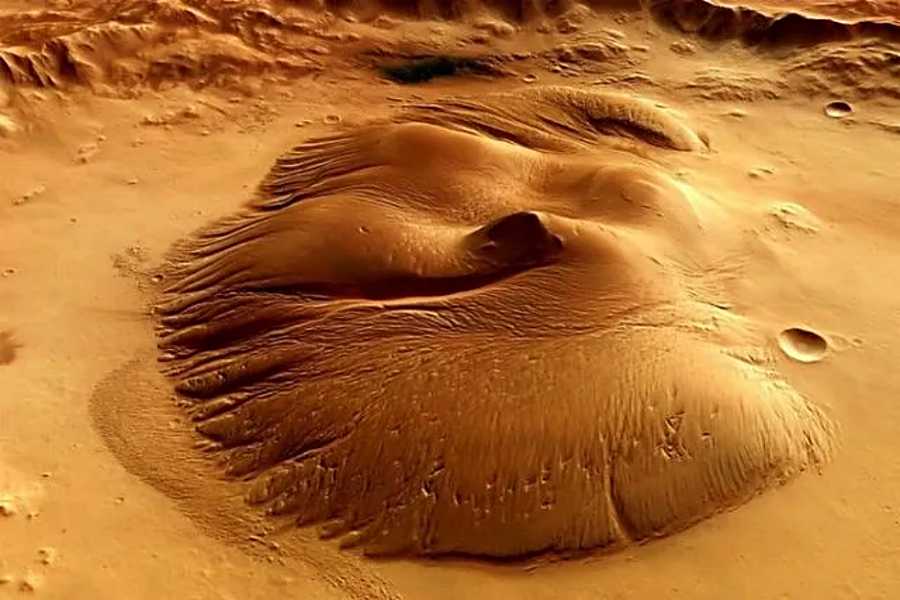Wed 18 September 2024:
At the Europlanet Science Congress, scientists have unveiled a groundbreaking gravity map of Mars, providing fresh insights into the planet’s internal dynamics. The map uncovers vast structures hidden beneath the remnants of Mars’ ancient ocean, and, intriguingly, suggests that Olympus Mons—the Solar System’s largest volcano—remains influenced by shifting forces deep within the Martian mantle.
This cutting-edge map was compiled using data from various space missions, including NASA’s InSIGHT, and challenges current perceptions of Mars’ volcanic history. According to the research, internal processes within the planet are still in motion, prompting a reevaluation of volcanic activity on Mars.
Led by Dr. Bart Root from the Delft University of Technology, the team discovered that Mars’ interior behaves in unexpected ways. In the regions surrounding Olympus Mons and Tharsis Montes—home to the planet’s most massive volcanoes—scientists found a surprising upward movement, rather than the expected subsidence. This phenomenon is attributed to intense pressure caused by a colossal mass rising from the planet’s mantle.
Additionally, researchers have detected dense formations buried deep beneath Mars’ northern plains, close to its polar regions. These structures, hidden beneath thick layers of sediment likely deposited on an ancient seabed, contribute to gravitational anomalies observed in the area. A total of 20 such buried formations are believed to exist.
The revelations suggest that Mars’ interior is still alive with activity. The possibility of future volcanic eruptions is now on the table, as these subterranean movements could spark fresh volcanic events on the Red Planet.
__________________________________________________________________________

https://whatsapp.com/channel/0029VaAtNxX8fewmiFmN7N22
__________________________________________________________________________
Mars is home to some of the largest volcanoes in the Solar System, most notably Olympus Mons, a giant shield volcano nearly three times the height of Mount Everest. Volcanism on Mars likely began around 3-4 billion years ago during the planet’s early history, a time of intense geological activity.
The Tharsis region houses multiple massive volcanoes, including Olympus Mons and Tharsis Montes, formed due to hotspots in Mars’ mantle. These volcanoes are different from those on Earth, as Mars lacks tectonic plates, allowing these structures to grow larger and remain active for longer periods.
While volcanic activity peaked billions of years ago, recent studies suggest Mars’ interior may still be active, and future eruptions could occur.
SOURCE: INDEPENDENT PRESS AND NEWS AGENCIES
______________________________________________________________
FOLLOW INDEPENDENT PRESS:
WhatsApp CHANNEL
https://whatsapp.com/channel/0029VaAtNxX8fewmiFmN7N22
![]()
TWITTER (CLICK HERE)
https://twitter.com/IpIndependent
FACEBOOK (CLICK HERE)
https://web.facebook.com/ipindependent
YOUTUBE (CLICK HERE)
https://www.youtube.com/@ipindependent
Think your friends would be interested? Share this story!





